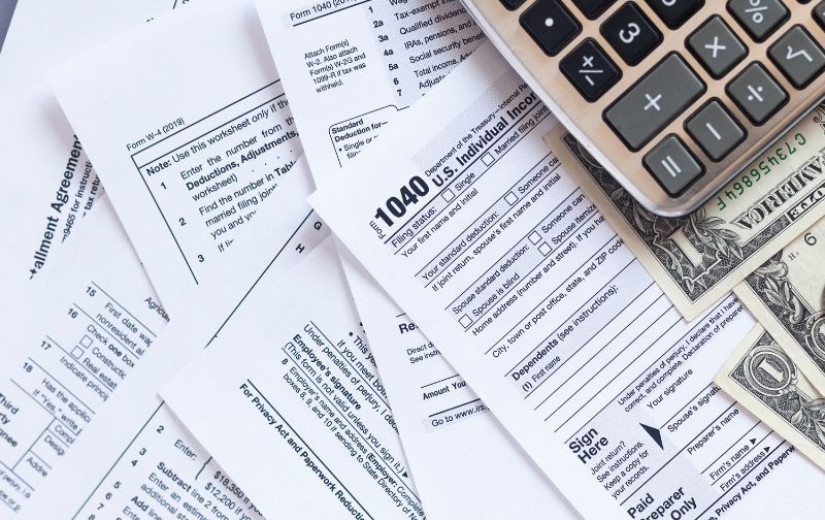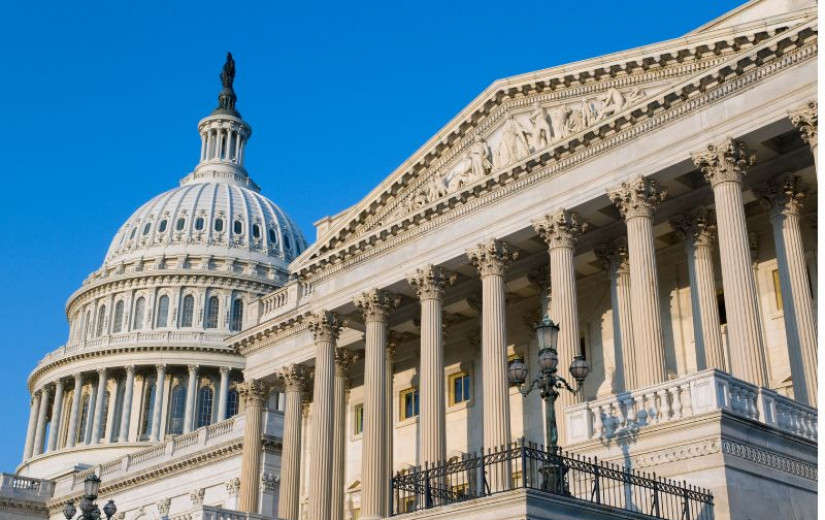
With the onset of the Great Depression, the United States appeared on the verge of political revolt in rural areas. For half a century, rural people had felt increasingly marginalized by changes in American society and the economy and ignored by political leaders. A farm crisis in the 1920s inflicted further pain. By 1933, with farmers earning just half what they had in 1919, and when a full one-third had lost their land, rural anger seemed ready to erupt. Edward A. O’Neal, president of the Farm Bureau, predicted at a Senate committee hearing, “Unless something is done we will have revolution in the countryside within twelve months.”
Into that crisis stepped Franklin D. Roosevelt. He oriented his presidential campaign around lower- and middle-income Americans and placed rural communities squarely at the center. He blamed the Depression in part on the farm crisis and laid out a plan for what the historian Sarah T. Phillips called a “rural renaissance” based on electrification of the hinterland and national planning to raise crop prices. When Election Day 1932 came, large numbers of farmers in midwestern Plains states who typically voted Republican threw their support behind FDR, helping deliver not just his victory but also the largest Democratic majorities in Congress up to that point.
As the New Deal progressed, Roosevelt and the Democrats made good on their promises with an array of programs that lifted farmers’ incomes and living conditions, stabilized small-town banks through the Glass-Steagall Act, and allowed Main Street retailers to compete with chain stores via the Robinson-Patman and Miller-Tydings Acts. Though plenty of small-town voters remained loyal to the GOP, FDR’s New Deal successes helped Democrats remain competitive in rural America for the next half century.
Today, after another decades-long decline in the rural economy, that rough political parity is gone. For the first time in U.S. history, only one political party dominates rural and small-town America, and that is the GOP. Voters in rural counties comprise only about 20 percent of the U.S. electorate. But because institutions like the Senate and the Electoral College overweight small places, Republican dominance of those counties gives the GOP an extra dollop of power—help in winning control of Congress, the presidency, and even the courts—that it could not otherwise command, and that no other party has ever enjoyed. At the same time, it makes winning nationally a much steeper climb for Democrats, and harder for them to govern when they do.
The Democrats’ weakness among rural voters seems so profound that many pundits and party activists believe that trying to woo them back is a fool’s errand. However understandable, this attitude ignores two truths.

First, to regain their competitiveness, Democrats don’t need to “win” the rural vote. They must only increase their margins modestly—“lose by less,” as some analysts call it.
Second, as the Roosevelt era shows, voters’ loyalties can loosen at times of economic distress, and many policies promoted by President Donald Trump and the Republican Party are already wreaking havoc on rural areas. The trade war is harming soybean farmers and threatens many others who export significant amounts of produce. Ramping up deportations—in addition to disrupting communities and families—is diminishing local workforces. Cutting health and food assistance promises to escalate hospital closures and hunger in some of the country’s poorest rural areas. All that has occurred less than a year into Trump’s second term.
If rural America suffers continuing economic distress over the next one to three years and the Democratic Party invests in the right rural campaign infrastructure, the party could earn more than middling gains in 2028. That’s what happened as recently as 2008, when, during the Great Recession and with the help of Howard Dean’s famous “50-state” campaign strategy, Barack Obama won 53 percent of the popular vote and Democrats took the majority of the most rural districts.
That victory was short lived, and in the years since, increasing numbers of rural Americans, particularly non-Hispanic white people, have come to view the Democratic Party with distrust and disdain. Still, the abject failures of the Trump administration present an opening for Democrats to win back the loyalties of significant numbers of rural voters. As the New Deal teaches us, producing public policies that respond to the needs of rural people must be part of the solution. However, just as important will be investing in long-term party building and organizational renewal at the state and local levels, as this magazine has long argued. Such efforts will be key not only to connecting voters to the policies Democrats produce in the short term, but also to reducing polarization and shoring up local and national democracy over the long haul.
Why did rural people living in disparate parts of the United States shift in unison to the Republican Party? In our new book, Rural Versus Urban: The Growing Divide That Threatens Democracy, we address that question by examining data on social, economic, and political developments in all 3,143 counties in the United States from 1976 to 2020. We also conducted interviews with local Democratic and Republican leaders in six states, as well as several former U.S. senators and representatives who represented rural states and districts.
Many people assume that place-based political polarization is driven by a large divergence in rural and urban Americans’ views about public policy. After examining the highest-quality publicly available public opinion data, we found that to be wrong.
On questions related to the size of government, rural and urban non-Hispanic white Americans answer very similarly when asked about whether government should increase, decrease, or maintain spending for each of several types of programs. Both groups are generally supportive of spending on education, health care, police, and infrastructure, with only a few percentage points (one to three) separating them.

Some assume that the rural-urban divide emanates from social issues or the so-called culture wars—issues such as abortion, LGBTQ rights, and gun control—yet even on these issues, the difference in views is underwhelming. Take gun control, for example. We examined several questions—including requiring background checks, banning assault rifles, and other such measures—and found that rural white people, on average, are just eight percentage points less in favor of regulating gun use than their urban peers.
On abortion, similarly, the gap between rural and urban white people is just 10 percentage points. When we asked local Republican Party leaders which issues energized local voters to support the party, a few mentioned abortion—and specifically a pro-life position—but others did not. One Republican county chair in Michigan, Rick Swenson, told us, “There’s a huge part of the Republican Party that’s just pro-life, period; there’s also a huge part of the Republican Party that feels the issue was decided in 1971 in Roe v. Wade, and that was close enough.” Swenson’s personal stance is that abortion is “none of the government’s business” but, rather, “between a woman, a doctor, and God.”
Overall, we find no discernable differences in the views of rural and urban Americans on most issues, and only small differences on others. To be sure, the role of such differences can be exacerbated by political elites who reframe issues in particularly sensationalistic ways for electoral gains. But on their own, underlying beliefs about public policy are insufficient to account for the large and increasing partisan and voting gap between rural and urban dwellers nationwide.
American history suggests, furthermore, that it doesn’t make sense to consider rural people as innately more conservative than urban people. Rural Americans supported the late 19th century’s populist movement in pursuit of economic justice, and it eventually led to several progressive policy achievements. During the 1980s farm crisis, that same spirit infused the mobilization of farmers in the Great Plains states. Conversely, from the 1950s through the 1970s, white reactionary movements against the integration of Black Americans in public schools and busing were based in cities and suburbs—hardly distinguishing them as centers of progressivism. Furthermore, as recently as the early 1990s, rural dwellers voted similarly to urban dwellers nationwide in presidential elections.
Non-Hispanic white rural and urban Americans do differ dramatically in one regard, however: their attitudes about those in the political party that dominates places apart from where they themselves live. In 2020, when white rural Republicans were asked to rate Democrats on a feeling thermometer from 0 to 100, they offered, on average, a dismal 14 points; white urban Democrats, similarly, put Republicans at 17 points. These low assessments of fellow citizens in the opposing party were far lower than nearly all of the rankings given to other groups: For instance, white rural dwellers put Black Americans at 70, Hispanic Americans at 67, gay men and lesbians at 57, and “illegal” immigrants at 39. In short, rural and urban Americans barely disagree with one another on issues, but they are bitterly divided over politics nonetheless. In order to more fully understand the growing political gulf, we need to look elsewhere.
In our research we discovered that the rural-urban divide began in the 1990s and early 2000s with the deepening of place-based economic inequality. Deindustrialization and the rise of post-industrial capitalism roiled the landscape, with harmful effects on rural economies. Historically, rural areas have disproportionately relied on farming and extractive industries. Already in the 1980s, many family farms went under, replaced by agribusiness. By the 1990s, technological advances meant that fewer workers were required in gas, coal, and other forms of mining. For a time, jobs in manufacturing, which had migrated out of urban areas, helped soften the blow. But those vanished as the North American Free Trade Agreement (NAFTA) and other trade policies prompted companies to shutter their plants and move abroad.
FDR oriented his presidential campaign around lower- and middle-income Americans and placed rural communities squarely at the center. He blamed the Depression in part on the farm crisis and engineered a “rural renaissance” based on electrification of the hinterland and national planning to raise crop prices.
These circumstances often became apparent as we met up with rural political leaders to interview them. Patrice Hawkins is a Democratic county chair in eastern North Carolina. In her county, few public places exist where people can have a quiet conversation, so instead we met for coffee in a fast-food restaurant on a busy strip just off the highway. She explained that the good-paying manufacturing jobs of the past are gone, and now unemployment runs high and more than one in four local residents lives in poverty. Hawkins, a Black woman in her 40s, is among the just roughly one in five rural dwellers over age 25 with a four-year college degree. “I was born here—I never left, unfortunately,” she said with a laugh. “There’s nothing here,” she said, gesturing to the big-box chain stores lining the street—Walmart, Dollar General, and others. “They’re trying to build up all this shopping stuff. No, we gotta have opportunity! You can shop anywhere, but if I ain’t making enough money to buy nothing, what’s the point of having all that?” She noted, “The only lucrative jobs I’ve had are jobs that are outside of the county.” She worked locally for years at a social service agency that paid her only $33,000 a year, despite her degree and years of experience. She finally sought a job in a neighboring county and gained a $15,000 raise by doing so, but it requires a long commute, as is common for many rural people.
Such changes in the rural economy nationwide spurred political change. They left many residents disillusioned with the Democratic Party, breaking with the long-held view of many of their parents and grandparents that the party was the advocate for their interests. Even though Republicans initiated most of the policy shifts that ushered in key changes, several came to fruition when Bill Clinton served as a president, and some high-profile Democrats played leading roles. The Democratic Party therefore seemed responsible. Rural dwellers—particularly those living in counties experiencing job and population decline—began to abandon the party, commencing the rural-urban divide.
Meanwhile, many urban areas became the epicenter of economic growth in the United States. These places boomed in part due to the development of the “knowledge economy”—meaning high-end services involving technology, business services, and finance. They increasingly attracted highly educated Americans, including those from rural places, as their position at the center of the nation’s economic growth was bolstered by policies supported by many Democratic lawmakers. These highly educated urbanites, in turn, became strong supporters of the Democratic Party.
As the 2000s continued, rural people reacted to what they saw as elite overreach on the part of the Democratic Party. They associated the party with urbanites who were not only more highly educated and held more comfortable lives than themselves, but now seemed to want to impose their preferences nationwide, through the power of government. Characterizing Democrats, Matthew Novak, a Republican county chair in northern Michigan, remarked, “They seem completely detached from how people live here.” It was not so much that rural people disagreed with urbanites all that much on the substance of the issues; rather, they felt that they were subject to policies that were foisted on them by affluent outsiders who knew little about them or their concerns. The ensuing resentment on the part of rural people widened the political gap.
Some observers have argued that the rural-urban political divide is reducible to racism or xenophobia on the part of rural dwellers. These prejudices have certainly been and remain key organizing features of American politics, and are central threats to democracy in the United States. Cities, moreover, have long been coded by the media and political elites as Black, leading many to suspect that rural resentment of urbanites is just an artifact of racism.
Our research turns up findings that are more complicated. We find that anti-Black racism attitudes exist among both urban and rural non-Hispanic white Americans at quite similar rates. This is not all that surprising: consider the extensive efforts by white people to use local land regulation to hoard educational and financial opportunities in their neighborhoods. When the rural-urban divide emerged in the 1990s, neither whites’ attitudes about Black Americans nor an increase in immigrants in their counties were related to its growth. In more recent years, however, rural white people began to view the Democratic Party’s policy agenda as catering to Black people, while overlooking their own needs. At this stage, anti-Black racism did play a role in widening the gap, but crucially we find that it was activated by the economic decline in earlier years. The continued rhetoric by President Trump and the Republican Party, describing cities as “chaotic” and “crime ridden,” likely only exacerbates such sentiments.
A third dimension concurrently cemented the rural-urban divide: organizational dynamics, both those that mobilized rural voters and those that failed to do so. Political party leaders and civic organizations associated with them may help promote political responses to economic, social, or policy changes. They “connect the dots” for citizens, making meaning of events for political purposes, and channeling and promoting political participation. Through such activities, organizations can facilitate and reinforce a new divide among voters.
Certainly both the Republican and Democratic political party organizations at the local level, like other civic organizations, have been deteriorating for decades, at least since the 1960s. Yet in recent times, the GOP has formed enduring and powerful allegiances with groups that stepped up to interpret developments for citizens, construct shared social and political identities, and mobilize voters. Evangelical churches and local rod and gun clubs, hunting clubs, or shooting ranges affiliated with the National Rifle Association, for example, helped mobilize voters into the Republican Party.
Conversely, the Democratic Party in earlier times benefited from a supportive relationship with organized labor, but to the extent that previously existed in some rural places, it has now largely subsided. State and national organizations of the Democratic Party have failed to provide needed support for rural county organizations, and in many places abandoned them. As a result, the party has been hobbled as a countervailing force to conservative organizations.
Many pundits assume that the rural-urban divide only emerged once Donald Trump became a presidential candidate in 2015. To the contrary, it is the result of long-running processes that have unfolded over time and interacted with one another.
Now that the rural-urban divide has been entrenched, what threats does it pose to American democracy?
The most immediate effect of the rural-urban divide is the transformation of politics into an epic battle of “us” versus “them.” Within rural areas, it means that rank-and-file Democrats face intimidation or marginalization in their communities. Nationwide, it is dividing American society, undermining the cross-cutting social connections that hold people together and soften tensions. While the rural-urban split is by no means the only source of such divisions today, its geographic nature makes it particularly pernicious given the literal distance between those on either side.
Even more, the rural-urban divide combines with several long-existing U.S. political institutions, most located in the Constitution itself, in ways that further threaten democratic deterioration. These arrangements have always given extra political leverage in less populated places, yet those advantages have never before been consolidated into a single party. Now that an increasingly extreme Republican Party overwhelmingly wins in rural areas nationwide—subjecting residents to one-party government—it can exploit these small yet important advantages to gain more political power than it would otherwise.
Today the rural-urban divide gives the GOP outsized opportunities to control each of the three branches of national government. Already in the 21st century, two American presidents have lost the popular vote but won the Electoral College, in part because of its rural bias. Meanwhile, the even more skewed nature of the Senate—two senators per state regardless of the now huge disparities in population—grants an extra-large voice to rural Republicans that can be used to block legislation or judicial nominations. In fact, in the 12 times Republicans have held majority power in the Senate in recent decades, only twice did they represent at least 50 percent of the U.S. population.
For the first time in U.S. history, only one political party dominates rural and small-town America, and that is the GOP. Because institutions like the Senate and the Electoral College overweight small places, the GOP commands outsized power that no other party has ever enjoyed.
Since presidents nominate federal judges and the Senate must approve them, furthermore, these factors can permit stacking of the judicial branch by the party winning most states that are more rural than the U.S. population generally. In the current Supreme Court, for example, remarkably most members of the conservative majority—four justices—owe their seats to these arrangements, having been confirmed by a Senate vote representing less than half of the U.S. population. Three of those were nominated by President Donald Trump after he won the 2016 election with a minority of the popular vote. Those justices have proved pivotal in undermining basic pillars of democracy, such as by declaring presidential immunity from criminal prosecution for crimes committed while in office (Trump v. United States), as well as overturning long-standing and popular precedents, such as access to reproductive rights (Dobbs v. Jackson Women’s Health Organization). In short, when rural voters are consolidated in one party, it can permit minority rule.
The combination of contemporary place-based polarization with long-standing U.S. institutional arrangements is threatening democracy itself. Together, these features can permit the party benefiting from them to further stack the deck in their favor. In time, leaders in that party may be able to change the rules to lock down their power, undermining representative government—as we see with recent efforts by Republicans to insulate themselves from voters through gerrymandering.
While the rural-urban divide is deeply entrenched, it is not immutable, and at the very least, it need not be so large. In the past, the Democratic Party consisted of a broad coalition between rural and urban voters, united by their concern about economic issues. The New Deal effectively incorporated rural voters by responding to their needs with an array of public policies. President Joe Biden tried to emulate that approach, channeling more policies to distressed rural areas than any president since FDR. Yet, in 2024, Vice President Kamala Harris’s defeat in the presidential election and Democratic losses in the House and Senate suggest that policy alone can’t break through the rural distrust that has been on the rise for several decades now. It’s not enough for experts to formulate policies in Washington and then roll them out in rural places. Tweaks to party messaging will also come up way short. The Democratic Party’s brand in rural areas is simply too tarnished to paper over with new sloganeering.
If not policies or messaging alone, then what else is needed? We argue that Democrats need to recommit to building the party’s organizational infrastructure around the country, and in rural areas especially. In particular, national leaders need to invest significant time and resources in state and local parties. Volunteers like Hawkins can’t do it on their own. Rather, leaders need to invest in year-round organizers, preferably drawing from the great amount of talent existent in rural areas.
Party building could have several benefits. For one, strong local parties are better situated to listen and understand what rural people actually need. Moreover, when Democrats are able to advance policies that benefit rural areas in the future, they will need local, trusted ambassadors to point out where those policies came from. And finally, local parties can likely reduce polarization. While it is easy to villainize distant political figures from faraway cities, it is much more difficult to see your literal neighbor as an existential threat to your well-being and way of life. In all of these ways, the political work of organizing can help heal the rifts and bridge the divide.
We don’t need to look too far back to see how this can happen. Although the rural-urban divide has grown throughout most of the period since the mid-1990s, Democrats managed to claw it back during a brief period in the midst of that time. How they did so is instructive. In 2005 Howard Dean—former governor of Vermont and, importantly, himself a former county chair—became the chairman of the Democratic National Committee. He sent three or four grassroots organizers to every state nationwide, and they made a concerted effort to support the work of county chairs, particularly in rural places. When Election Day came in 2006, Democrats won both chambers of Congress, winning back many rural seats, and won control of more state legislatures than they had since 1994. Then in 2008, rural voters contributed to Barack Obama’s victory, in which he won 53 percent of the national vote, greater than any Democratic presidential candidate since Lyndon Johnson in 1964, and the party won control of both houses of Congress. Over the next two years, rural Democrats provided crucial votes for legislation, not least for the Affordable Care Act, achieving at last a 60-year goal of extending health coverage to working-age Americans.
Still today, just under a third of rural Americans on average identify as Democrats. Many rural dwellers, including one-quarter of whom are people of color, are core Democratic Party constituents. The national party needs to reach out to them and offer support. At a minimum, organized efforts in rural places can help statewide Democratic candidates to “lose by less” there, and the extra margin can help them win overall. County chairs we interviewed in Georgia embraced such a strategy when Raphael Warnock and Jon Ossoff ran for the Senate, and they took pride in their victories, which they knew were aided by stronger-than-usual local margins for Democratic candidates. In some rural places, furthermore, Democrats are more prevalent and could become competitive with Republicans, particularly as the GOP continues to ignore the real needs of local residents.
Democrats don’t need to change their values to attract more rural voters, but they do need to understand their struggles and engage them in the process of making their communities better off. Following the real pain caused by the Trump administration, Democrats will have an opportunity to build a bigger tent, one that mirrors the electoral arrangements embedded in American institutions. To be ready, they need to learn, once again, to connect with rural Americans. Democracy depends on it.










